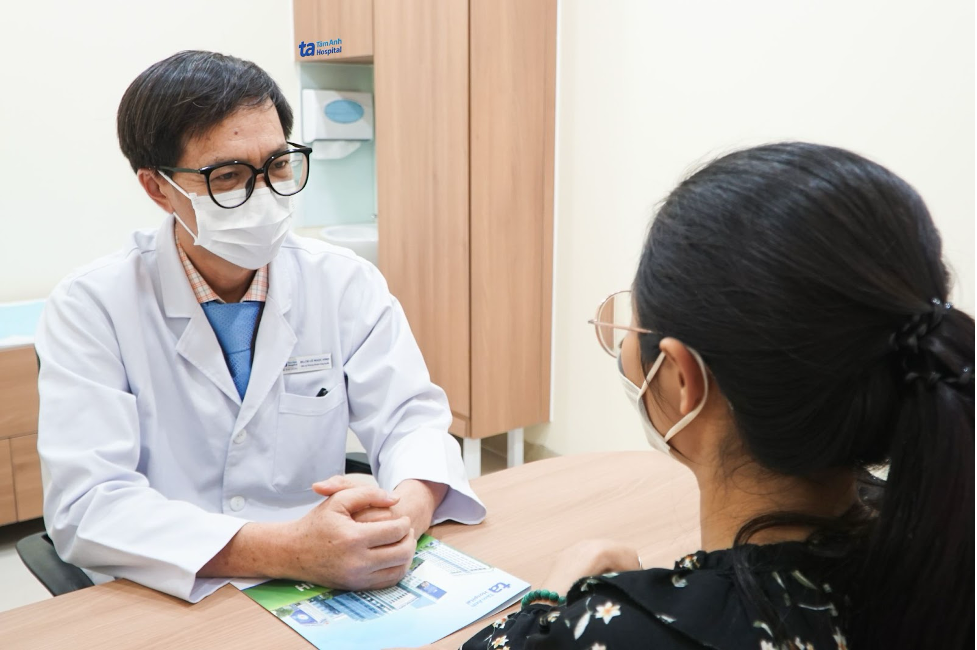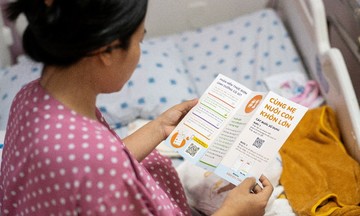Answer:
During breastfeeding, women's breasts often develop hard, thick, swollen lumps. These lumps may feel round or uneven, appear in one or both breasts, and can also occur in the armpits, causing pain. These are typically milk clots (nodules) due to blocked milk ducts.
Common causes of breast lumps during breastfeeding include mastitis, milk accumulation due to incorrect breastfeeding positions or improper latch, and increased milk production 1-2 months after childbirth. These lumps usually decrease in size as milk flow improves. If the blockage persists, the lumps can grow larger, causing inflammation and breast swelling. The mother may experience fever, pain, and general discomfort. Without prompt treatment, there is a high risk of developing an abscess.
 |
Doctor Vinh consults with a patient. Illustrative photo: Tam Anh General Hospital |
Doctor Vinh consults with a patient. Illustrative photo: Tam Anh General Hospital
Other causes of breast lumps during breastfeeding include milk cysts (galactoceles), benign breast cysts, and fibroadenomas. Galactoceles form when milk ducts become narrowed or blocked, trapping milk in a cyst. These cysts are round, smooth, movable, and can range from 1-10 cm in size, often shrinking after the baby nurses. In some cases, galactoceles cause pain and require incision or aspiration to drain the milk. Repeated incisions or aspirations can increase the risk of infection.
Fibroadenomas during breastfeeding are benign, painless lumps that appear at the end of pregnancy or during breastfeeding. They can grow rapidly due to hormonal stimulation and often disappear after breastfeeding ceases. It's rare for breast lumps that appear during breastfeeding to be malignant. However, this can still occur, with signs including hard, firm, immobile lumps that don't decrease in size after nursing, and dimpling of the skin. It's crucial to consult a specialist in Breast - Head and Neck Surgery or Oncology for a proper examination and diagnosis.
Inflammatory breast cancer, with symptoms like redness, swelling, and pain throughout the entire breast, can be mistaken for mastitis. A distinguishing feature of inflammatory breast cancer is the peau d'orange (orange peel) appearance of the breast skin, and sometimes nipple retraction.
Doctor Le Ngoc Vinh, M.D.
Department of Breast - Head and Neck Surgery
Tam Anh General Hospital, TP HCM
| Readers can submit questions about cancer here for doctors to answer. |












